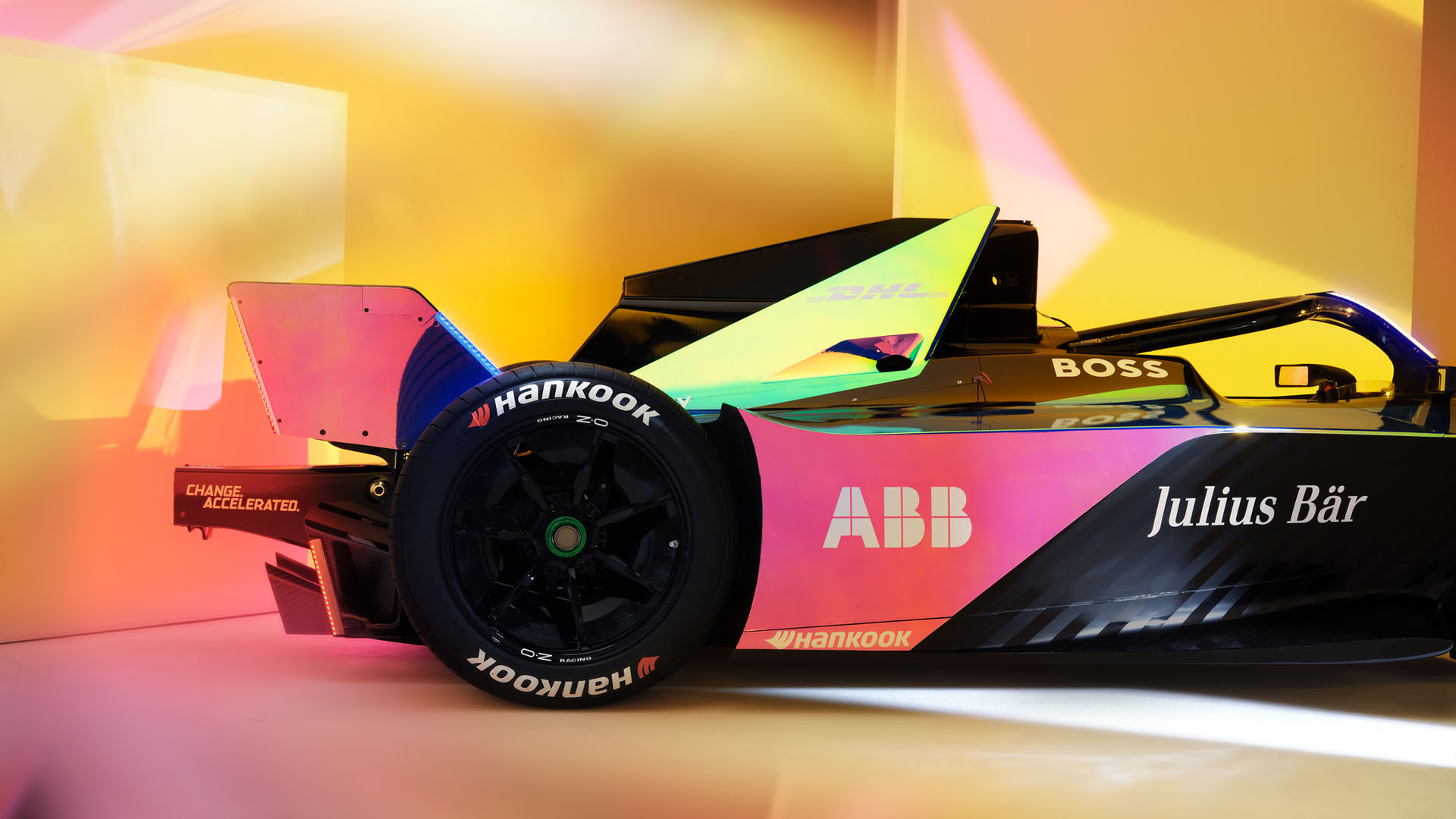

A race car with no rear brakes sounds hazardous as a proposition, but that’s the case with Formula E’s Gen3 car, unveiled in Monaco on Thursday. The only way for drivers to slow the rear of the car will be using powerful regeneration, which is a lot different than what people are used to in their daily drivers. It’s not the most drastic change for Formula E drivers, though the fact that there are no rear friction brakes to fall back on could definitely come into play.
FE’s Gen3 car will be rear-wheel drive, just like the machine it replaces. The back motor-generator unit will deliver up to 469 horsepower (350 kilowatts) or recover that in regeneration from the rear axle, which is a lot of electrical power but otherwise pretty standard race car stuff. What’s kind of unusual about it is that along with the front friction brakes, it also has a front motor-generator unit. This will at first only be used for recovering energy, bolstering the whole car’s regen capacity to a maximum of 600kW—250kW more than its maximum output.
That’s lots of regen, and it’s totally replacing the rear hydraulic brakes since Formula E drivers really don’t use the darned things already. Venturi driver Lucas di Grassi, who has been involved with Formula E since before the first car was designed, told me, “This year, we only use the hydraulic brakes on the rear axle in the first two or three laps of the race. Because after that you will use the regen, otherwise you’re wasting energy. So we already race like 90 percent of the race without the rear brakes.”

In fact, the main reason that drivers use the rear hydraulic brakes on the opening laps is that the sporting regulations force them to start with batteries at 100 percent, so they’re not able to regenerate until it falls below 95 percent. Formula 1 and Formula E make up to 80 percent of any braking event from regeneration, so over the past four seasons in the electric racing series, drivers have shifted to not using the hydraulic brakes at all, really.
“In qualifying, only a few brakes—very high powered brakes—we use the mechanical,” di Grassi explained. “The rest, it’s all regen controlled. So I guess with 350kW it will be very straightforward and is even better because you can control the deceleration of the car with the electric motor much more precisely than we do with brakes.
“So that’s not a concern at all. I think it doesn’t change the driving at all because in the end, what matters is how much power you can extract out of the rear tire, regardless if we’re wasting the energy on heat or if you charge it back or whatever,” di Grassi concluded.
That front axle MGU, though, could be tough for teams to balance. “What concerns me a lot is having a driveshaft to the front axle, because from LMP times—with the Audi LMP1—I remember that was a very tricky setting; to get the differential to work in a good way,” di Grassi added.
“So this will be very interesting to try and I think if this will change the driving style, like you will have to brake a little bit more straight and then turn. If you lock one of the wheels, it’s harder to unlock because you have to make the diff rotate to the other direction,” he continued.
The slight risk, of course, is that the car can’t brake all that well if the motor-generator unit isn’t working. It would be a fair argument to say that there’s not a lot a driver can do if the motor goes into a runaway event (which is an actual possibility), though having the failsafe of two regenerative motors to potentially choose from does lower the risk of total failure.
Got a story tip? Mail it in on tips@thedrive.com